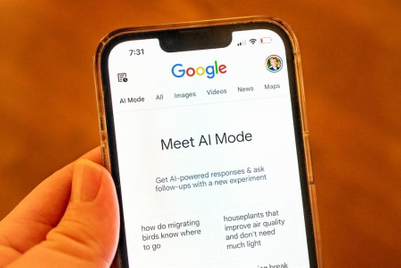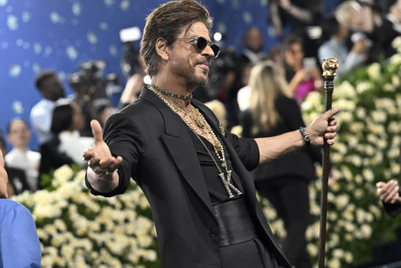.jpg&h=570&w=855&q=100&v=20250320&c=1)
The Oxford University Press has declared ‘Brain Rot’ as the word of the year for 2024. The article on their website opens with the line “Following a public vote in which more than 37,000 people had their say, we’re pleased to announce that the Oxford Word of the Year for 2024 is ‘brain rot’.”
A serious investigation is needed to determine why they were pleased with this announcement because the word, according to Oxford itself, is defined as “the supposed deterioration of a person’s mental or intellectual state, especially viewed as the result of overconsumption of material (now particularly online content) considered to be trivial or unchallenging.”
It’s a complex phenomenon that you can now experience a la carte. Zombie scrolling, doom scrolling, compulsive video gaming—there is an entire range of tantalising sensory overloads and delicious dopamine feedback loops for you to choose from. So please, by all means, go ahead and overfeed your brain till it gets a heart attack.
If you didn’t like that joke, here’s another one. Social media addiction is not officially recognised as a medical condition, even though many psychologists and psychiatrists believe otherwise.
Today, more than half the world is on social media. We’ve figured out how to give five billion people access to content created by five billion people. But we still haven’t figured out whether that’s a good idea.
I think that’s important to consider. Limitless content on limitless apps from limitless sources all the time.
This is why I don’t think it’s accurate to associate brain rot solely with consuming content that is ‘trivial’ or ‘unchallenging.’ Who decides what is trivial or unchallenging?
Besides, why expect a random reel to challenge you? If a challenge is what you seek, watch director Christopher Nolan’s Tenet five times in a row.
Your brain will reverse-rot and turn into AI code. You can then generate mildly unsettling images of what Donald Duck would look like if he were from Hyderabad without using Midjourney. The point is, brain rot has more to do with how easy it is to access all the excess. It’s not limited to a few content genres.
As far as brands and ads are concerned, we must continue to do what we’ve always tried to do: Tell a great story, tell it well, and be consistent about it. Creativity has been, and always will be, the antidote to brain rot.
Before social media, brain rot existed on TV channels, which exploded in the 1990s. Well-crafted, creative ads cut through the clutter back then. There were hundreds of channels back then; now, there are millions. The noise will always get bigger with time. Our ideas must catch up, and so should our craft.
For instance, many marketers believe having a visual hook in the first five seconds is essential. It may sound like you’re initially adding to the sensory overload to suit your brand agenda.
Still, if you follow that visual hook with a beautiful story or a clever joke that genuinely delights your audience, then perhaps you’re adding to the limitless content pool meaningfully. And you don’t have to feel so bad about it.
A campaign can go viral yet be meaningful and inspiring and not feel like another piece of sensory overload. A great example is the Women's Football World Cup ad released in early 2024. It’s a French ad called The Blues Compilation, and it brilliantly uses VFX to expose our bias and discrimination regarding women's sports. It’s evocative and compelling, tricking you into confirming your bias and then shattering it completely.
Even if we choose to go with a meme or a character that’s loved by our audience, we can make sure the story we tell using that meme doesn’t take our audience for granted. We can still craft something fresh and entertaining without being limited by the meme’s baggage. It is precisely what we tried with our GenZ Chudail film for YouTube India.
We can also create work that consistently focuses on brand-building instead of treating virality as the be-all and end-all of things. It will do us all good to invest time and effort in creating content and experiences that communicate what the brand stands for. If done right, our audience will rarely see this as brain rot.
A great example here at home is The Whole Truth. They consistently craft pieces that let their audience know what they stand for. They are all about transparency, which shows through their work… because their work is transparent.
Ours is a tricky business. I’m sure the first ad ever created was instantly declared brain rot. We continue to make something with passion that people pay to avoid. It’s a more significant challenge than watching Tenet five times in a row.
So, in the spirit of work that inspires me, I’d like to leave you with the chorus of my favourite song of recent years. Bo Burnham wrote and performed it for his Netflix special, Inside. The song is called ‘Welcome to the Internet.’
Could I interest you in everything? All of the time?
A little bit of everything all of the time.
Apathy’s a tragedy. And boredom is a crime.
Anything and everything all of the time.
 - Girish Narayandass, co-founder, Bare Bones Collective.
- Girish Narayandass, co-founder, Bare Bones Collective.



.jpg&h=334&w=500&q=100&v=20250320&c=1)
.jpg&h=334&w=500&q=100&v=20250320&c=1)
.jpg&h=334&w=500&q=100&v=20250320&c=1)

.jpg&h=334&w=500&q=100&v=20250320&c=1)

.jpg&h=334&w=500&q=100&v=20250320&c=1)
.jpg&h=334&w=500&q=100&v=20250320&c=1)
.jpg&h=334&w=500&q=100&v=20250320&c=1)
.jpg&h=268&w=401&q=100&v=20250320&c=1)
+(1).jpg&h=268&w=401&q=100&v=20250320&c=1)
.png&h=268&w=401&q=100&v=20250320&c=1)


.jpg&h=268&w=401&q=100&v=20250320&c=1)


